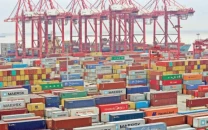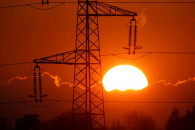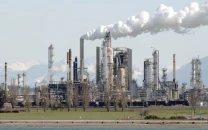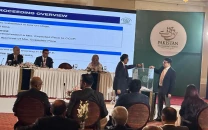CPEC – a ray of hope for Pakistan
Experts project country will witness industrialisation, end of energy crisis

Terming China-Pakistan Economic Corridor (CPEC) a jewel in the crown of Belt and Road Initiative (BRI), experts have emphasised that it carries the potential to transform the destiny of Pakistan for good.
They were optimistic that the energy projects being implemented in Tharparkar district under CPEC would add another 3,500 megawatts to the national grid over the next six to nine months, thus aiding the country in getting out of the energy crisis.
At a dialogue titled “CPEC – The Way Forward” on Thursday, the experts made an attempt to address the issues and misconceptions prevailing among the masses regarding CPEC, besides projecting its positive outlook.
Highlighting the brighter side, Special Assistant to Prime Minister on CPEC Affairs Khalid Mansoor revealed that new energy projects under CPEC added around 5,300MW to the national grid, while multiple projects were at the planning phase which, once operational, would enhance the capacity by 4,144MW.
Regarding infrastructure, he mentioned that construction work on Gwadar International Airport was around 26% completed.
Similarly, there were two more projects, namely Main Line-1 (ML-1) and Karachi Comprehensive Coastal Development Zone (KCCDZ), which he hoped would be executed soon.
With the advent of second phase of CPEC, the region would witness enhanced industrial cooperation and connectivity, he mentioned, voicing hope that Pakistan would also be attracting foreign investment.
Pakistan has a total of nine SEZs and a free zone at Gwadar, Mansoor pointed out and added that currently, the development of four SEZs – one in each province – and the free zone was the priority.
Terming the Gwadar Free Zone crucial, he was of the view that it could become the regional trade hub in future, because of its strategic location and deep-sea port.
Around 46 enterprises registered in the Gwadar Free Zone phase-1 (covering an area of 60 acres), of which 10 industrial units were currently operational, he underlined.
Issues/ misconceptions
Rejecting the perception that CPEC was only China-centric, Mansoor emphasised that SEZs were open for investors globally, as the prime focus was on regional connectivity.
Regarding foreign investment, he revealed that investors had to obtain 37 approvals and NOCs in order to move to the country, which was a hectic process.
Read Global businesses free to enter CPEC
Pertaining to this, amendments to the SEZ Act were approved by the cabinet last week, which would legally empower the management of every SEZ to obtain approvals for Chinese investors, he revealed.
Mansoor held the view that the lack of execution was the main issue, and not the lack of opportunities, as “we have been presented with a lot of opportunities”.
From the legal standpoint, CMS Cameron McKenna Nabarro Olswang LLP Legal Director Hassan Aslam Shad highlighted the bureaucracy and domestic legal framework as the two issues impeding the investment regime in the country.
“Historically, bureaucracy in Pakistan has stymied a number of important initiatives like CPEC,” he said, adding that either the country should reform the bureaucracy or remove the bottlenecks from it.
He suggested that Pakistan should work on capacity building through reforms in the legal education system, as “lawyers need to advise the government and private investors on the requirements under CPEC phase-2 contracts”.
Published in The Express Tribune, January 14th, 2022.
Like Business on Facebook, follow @TribuneBiz on Twitter to stay informed and join in the conversation.



















COMMENTS
Comments are moderated and generally will be posted if they are on-topic and not abusive.
For more information, please see our Comments FAQ